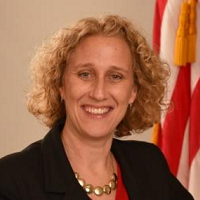 By Rebecca Freeman, PhD, RN, PMP/ Chief Nursing Officer
By Rebecca Freeman, PhD, RN, PMP/ Chief Nursing Officer
Twitter: @ONC_HealthIT
Care coordination is a key feature of evolving care models designed to avoid episodic care for patients. Currently, various federal programs that pay for health care services require a care plan as a component of care coordination. For example, care plans must be established for patients receiving certain Medicare benefits (e.g., home health care) and Medicare makes payment for certain primary care and care management services with a care plan element (e.g., chronic care management services).
Medicaid also provides coverage of Nursing Facility Services in licensed and certified Medicaid Nursing Facilities. Since unique resident needs may require particular care or services, the services needed to attain this level of well-being are established in the individual’s plan of care. These care plans must be interdisciplinary and longitudinal, or working across the entire care continuum. Current calls for care planning have been inconsistent. Therefore we must move towards a consistent understanding of both team-based care models and the resulting documentation that will empower data to move with the patients through the health care system.
Interdisciplinary and longitudinal approach to planning
Nurses, particularly in the hospital setting, have a long tradition of using care plans to guide discussions with patients. Care plans help us document our assessment of patients’ needs and goals, select appropriate interventions, and evaluate the impact of interventions. But they are also evolving plans; they continue to be revised based on the patient’s responses and progress. Despite decades of focus by nurses largely on the nursing-specific care plan, we are not the sole owners of this domain. Other licensed health professionals also create and document complex care plans that identify health concerns and set goals, often using their own discipline-specific terminologies. To move forward, we must encourage all disciplines (e.g., nursing, physical therapy, registered dieticians, etc.) to focus less on siloed, discipline-specific care and more on the communication and teamwork that optimizes patient outcomes. The patient’s care plan should reflect that interdisciplinary and longitudinal approach. Nurses can leverage their experience to promote the concept of comprehensive, shared care planning which follows the patient across the boundaries of care from their home to medical facilities and back again.
Accordingly, the patient care plan should reflect changes consistent with communication and collaboration among all members of the team; this may require significant change management and buy-in for everyone involved. Highly successful teams work together to combine their perspectives and develop a brand new approach to a common problem. Care team members may need to learn about each other’s approach to care, strategy, and documentation for their discipline-specific care plans, and generally build trust in one another, as they seek to rework the care plan with less focus on their discipline and more focus on the patient.
Health IT support planning
Health information technology supports this paradigm in coordinated care planning. As we move toward greater interoperability of health data, the delivery system can better reflect teamwork in the electronic health record and share that documentation across care settings. However, in order for nursing to be comparatively represented in these data, we must solve a longstanding conundrum regarding semantic interoperability. As mentioned above, many disciplines currently document their care plans using a discipline-specific terminology. In order to support the use of nursing terminologies within health information systems, the American Nurses Association currently recognizes 12 nursing terminologies.
In 2005, the interdisciplinary reference terminology SNOMED CT was chosen as the Consolidated Health Informatics (an eGov initiative of the Office of Management and Budget) standard for nursing terminology in the federal healthcare space. Further, the 2017 ONC Interoperability Standards Advisory designates SNOMED CT and LOINC as the preferred transmission languages for nursing assessments, interventions, outcomes, and problems. However, the nursing community does not have a uniformly-accepted plan for the implementation, use, or mapping of the recognized nursing terminologies to SNOMED CT and LOINC. In order for us to achieve semantic interoperability (in this case, all clinical disciplines using the same words to describe things) nursing must agree to a standard path forward, with regard to these terminologies.
This move towards a shared vocabulary is incumbent on each discipline on the care team as we promote comprehensive and shared care planning. If a physical therapist, dietitian, and nurse are all working on problems, interventions, and outcomes, we must determine how to aggregate one another’s work. The absence of a shared vocabulary can make it difficult to provide efficient, continuous care; this is especially true when the patient transitions to a new care setting. It will also make it difficult for us to track nurses in the data across the care continuum.
Nurses will continue to play an integral role in all patients’ care, regardless of the population or setting. We can leverage our experience as care planners to lead initiatives for care transformation and coordination that maximize outcomes for patients. We can also showcase our role as consummate team players and leaders by facilitating the implementation of a shared vocabulary, thus enabling more continuity in care for patients. We encourage all nurses and allied health partners to work collaboratively on these problems – to not only move towards a vision of shared care planning in practice, but to solve the terminology puzzle with a dedicated path forward, empowering our work and patient outcomes through data that are comparable, interoperable, and standardized.
Nurses deserve a reinvigorated approach towards care planning and more importantly, so do our patients.
Special Acknowledgements: Annette DeVito Dabbs, PhD, RN, FAAN for contributing to this post.
This post was originally published on the Health IT Buzz and is syndicated here with permission.
